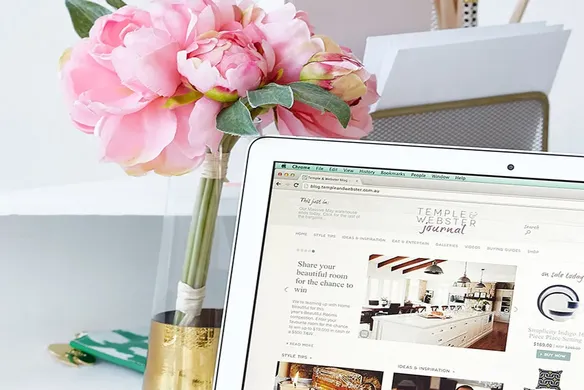Table of contents
When you can tell great stories about your business, it allows your customers to build a relationship with you beyond the purely commercial. You’re probably already telling stories via the quick and easy world of social media, but a blog has extra superpowers you can use to build loyalty, trust and warm fuzzy feelings about your business. We asked Victoria Baker, award-winning editor of Australia’s own Temple & Webster Journal (posting to an audience of over 1 million homewares-loving subscribers!) for her top tips on getting started with a small business blog and how to make the most of your content.
Make a plan before you start
Think about the types of posts you’re going to create and how frequently you want to post them. Can you make a video every month? A recipe every week? An image every day? Create a calendar and plan out your content monthly, including allocating time to create it.
Incorporate your blog into your main website
Having your blog on your website is better than hosting it separately. It’s easier to have everything at the one address, and regular posting will also help your website rank higher in Google search results.
Don’t create content that’s only about overtly selling your own business or products
Yawn. Keep your content relevant to your business, of course, but try to find stories in the experiences of your suppliers or customers, original points of view, or a different way to curate the content of others.
Spend time creating great images and graphics
The better your images and graphics, the more your readers will want to save and share them. If this isn’t within your skill set, try Canva.
Make your content work hard for you
Amplify it via your own social media channels, and look out for opportunities to share it on other blogs or websites that fit with your brand ethos.
Install Google Analytics
Google Analytics will tell you what content is most popular, when your traffic is highest, and where your readers are coming from. Test your different social channels to see which works best. It takes time to develop an audience, but it helps if you can track what’s going on, and you can use all the info to plan your future content.
![]()












